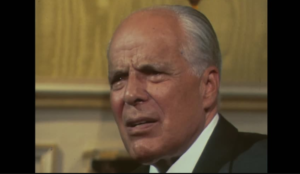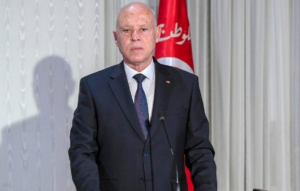Tunisia, located in North Africa, has a rich political history that has seen several presidents since its independence from France in 1956. Here is a detailed list of the presidents of Tunisia arranged in order of their tenure.
| President | Years of Tenure |
|---|---|
| Habib Bourguiba | 1957 – 1987 |
| Zine El Abidine Ben Ali | 1987 – 2011 |
| Fouad Mebazaa (Acting) | 2011 |
| Moncef Marzouki | 2011 – 2014 |
| Beji Caid Essebsi | 2014 – 2019 |
| Mohamed Ennaceur (Acting) | 2019 |
| Kais Saied | 2019 – Present |
First President of Tunisia:

Tenure: 1957 – 1987
Habib Bourguiba was the founding father of modern Tunisia and its first president. He played a crucial role in the country’s independence movement and led Tunisia for three decades.
Notable Achievements:
- Independence: Bourguiba was instrumental in negotiating Tunisia’s independence from French colonial rule, which was officially achieved in 1956.
- Modernization and Secularism: He introduced numerous social reforms aimed at modernizing Tunisia, including the promotion of women’s rights, secular education, and healthcare improvements.
- Economic Development: Bourguiba focused on economic development through state-led initiatives, aiming to diversify the economy and reduce dependency on agriculture.
Downsides:
- Authoritarian Rule: Despite his modernizing efforts, Bourguiba’s rule became increasingly autocratic. He suppressed political opposition and maintained tight control over the country’s political landscape.
- Economic Challenges: In the later years of his presidency, Tunisia faced significant economic problems, including high unemployment and inflation.
Bourguiba was eventually removed from power in a bloodless coup led by his then-prime minister, Zine El Abidine Ben Ali, in 1987.
READ ALSO: Presidents That Have Ruled Egypt Till Date
Current President of Tunisia:

Tenure: 2019 – Present
Kais Saied, a former law professor, was elected as President of Tunisia in 2019. His presidency has been marked by significant political changes and challenges.
Notable Achievements:
- Anti-Corruption Stance: Saied has positioned himself as a strong advocate against corruption, promising to clean up Tunisia’s political system.
- Constitutional Reforms: He has initiated a series of constitutional reforms aimed at addressing political and economic issues in the country.
Downsides:
- Political Uncertainty: Saied’s presidency has been controversial, particularly due to his decision to suspend parliament and assume executive control in 2021, which has sparked debates about the future of Tunisia’s democracy.
- Economic Issues: Tunisia continues to face severe economic difficulties, including high unemployment, inflation, and public debt.
READ ALSO: Presidents That Have Ruled South Africa Till Date
Current Vice President of Tunisia
Tunisia does not have a designated position of Vice President in its governmental structure. The political system primarily includes the President, Prime Minister, and other ministerial roles.
The absence of a Vice President is part of Tunisia’s unique political framework, where the Prime Minister often assumes responsibilities similar to those of a Vice President in other countries.
Highlights of Notable Presidents
Zine El Abidine Ben Ali (1987 – 2011):
- Economic Growth: Ben Ali’s early years saw economic growth and development, with significant investments in infrastructure and tourism.
- Authoritarian Rule: His regime became increasingly repressive, with widespread human rights abuses and suppression of political dissent.
- Downfall: Ben Ali was ousted during the Tunisian Revolution in 2011, sparked by widespread protests against corruption, unemployment, and political repression. His departure marked the beginning of the Arab Spring.
Beji Caid Essebsi (2014 – 2019):
- Democratic Transition: Essebsi played a crucial role in Tunisia’s democratic transition following the Arab Spring, being the first democratically elected president.
- Constitutional Democracy: He supported the implementation of the new Tunisian Constitution and worked towards stabilizing the political landscape.
- Downside: His tenure faced challenges, including economic hardships and occasional political unrest.
READ ALSO: Presidents That Have Ruled Suriname Till Date
Conclusion
Tunisia’s presidential history reflects its journey from a newly independent state to a country navigating the complexities of democracy and economic development.
From Habib Bourguiba’s foundational leadership to Kais Saied’s current presidency, each leader has contributed to shaping Tunisia’s political and social landscape.
The absence of a Vice President role emphasizes the unique nature of Tunisia’s political system, where the Prime Minister plays a pivotal role.
References
For more detailed information, the following sources were consulted:
- BBC News – Overview of Tunisia’s political history and presidents.
- Al Jazeera – In-depth articles on Tunisian politics and leaders.
- Encyclopaedia Britannica – Historical context and profiles of Tunisian leaders.
- The Guardian – Current updates and news on Tunisia’s political situation.
